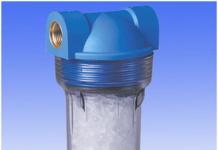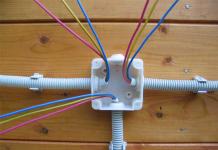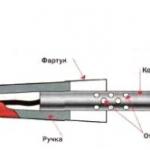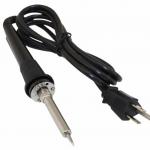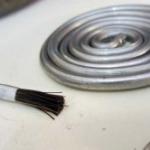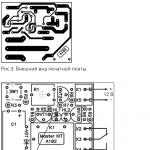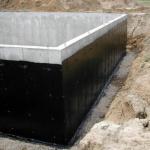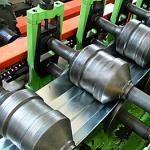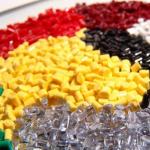Underground waterproofing is designed for reliable and durable protection of all types of underground structures from the negative effects of precipitation, ground and melt water and other destructive factors.
Specificity and features of underground waterproofing
Waterproofing of underground structures has a number of features due to the nature and specifics of such structures.
- Being underground, any structures are not only under the influence of high pressure, but also under the influence of seasonal compression and expansion of soil and soil.
- The outer part of the structure is located under the soil, so it is quite difficult to get access to it for waterproofing work.
- When choosing the type of protection of an underground structure from moisture and dampness, the climatic features of the location, the type and condition of the soil, and the operational characteristics of the facility are taken into account.
Types of waterproofing of underground structures
In accordance with the time of arrangement, the materials used and a number of technological nuances, the waterproofing of underground structures can be divided into two main types:
- primary;
- secondary.
When installing primary waterproofing, special compositions and concrete mixtures with high moisture resistance and frost resistance are used. Its main task is to increase the stability of the structure to the negative influence of external factors.
When installing secondary waterproofing, “liquid” rubber, polyvinyl chloride membranes, etc. are used. Secondary waterproofing also includes penetrating and injection waterproofing.
Features and benefits of the injection method
Using the injection method, it is possible to quickly and most effectively waterproof any underground structures, for example, metro stations, underground garages, tunnels, basements and basements, etc. Injection waterproofing has a number of significant advantages, including:
- high adhesion and the ability to quickly harden allow you to work even on a wet surface and significantly save time;
- environmental friendliness and safety for human health;
- resistance to temperature extremes and the negative effects of aggressive environments;
- a noticeable increase in the strength of the entire structure due to the complete penetration of injection compounds into the sealed pores and cracks;
- the possibility of using injection compounds not only for sealing seams, joints and cracks in the structure, but also for the nearby soil.
Materials for underground waterproofing
- Concrete or sand-cement compositions and mixtures.
- "Liquid rubber.
- PVC membranes.
- Gels, foams, injection resins.
The catalog of our site contains a large selection of modern materials for waterproofing underground structures and soil. Specially developed products of the AquaVIS series, which are produced by our company, meet all modern quality standards and successfully compete with analogues of the largest Western manufacturers.
Underground garage waterproofing
Underground garage waterproofing is one of the most demanded and relevant services in Moscow and the Moscow region today. This is due both to the large number of this type of underground structures, and to some specific features of their construction and operation.
To effectively protect underground garages from the penetration and negative effects of precipitation, groundwater and melt water, two main types of waterproofing are used:
- coating;
- penetrating.
If you are interested in high-quality and reliable waterproofing of an underground garage, but do not know which method and what materials to prefer, experienced specialists of our company will advise you on all issues and help you make the right decision.
Advantages of ordering underground waterproofing in our company
- Extensive experience in the field of waterproofing works on all types of underground structures.
- Affordable prices for all materials and services. For waterproofing underground structures, we use modern unique products of the AquaVIS series of our own production, which allows us to pursue a loyal pricing policy.
- Prompt execution of all works, regardless of their volume and level of complexity.
- You can order underground waterproofing on the website using a simple online form, or by contacting us by phone. After reaching a preliminary agreement, an experienced expert of our company will come to the site free of charge for a qualified assessment of the scope of work.
Of all the possible causes of high humidity inside buildings, groundwater is the most dangerous. Soil always contains a certain amount of moisture. Rains, snowmelt and the proximity of aquifers increase the concentration of water in the soil at times. Water tends to fill areas with lower pressure - the underground parts of buildings and structures, using the weak points of structures.
Ways to get groundwater:
- Pores and cracks in building materials.
- Communication routes.
- Seams of blocks and slabs.
- Violation of external waterproofing due to subsidence of buildings, displacement of soil layers and other mechanical damage.
- Anomalous excess of the groundwater level over the calculated one due to changes in the hydrological regime of soils.
In the event that the external waterproofing is damaged, and the frame has many uninsulated joints, such filling can be very fast and have serious consequences for the object. Only internal waterproofing can prevent this, since quick access to the underground part of the structure remains only from the inside.
Why underground waterproofing is needed
High-quality underground waterproofing of concrete structures allows you to protect the supporting elements of the structure from the damaging effects of moisture. The use of modern materials prevents its penetration into the thickness of walls and foundations through pores and microcracks and prevents the development of corrosion of metal reinforcement. In addition, underground waterproofing allows you to get rid of capillary suction of moisture and makes it possible to eliminate existing leaks in the body and seams of concrete. A complex of waterproofing works performed by skilled workers using quality materials is the best way to extend the life of structures in a humid environment.
In some conditions, for example, the proximity of groundwater, the construction and normal functioning of facilities is generally impossible without underground waterproofing.
The main tasks of underground waterproofing:
- Protection of materials and structural elements and, as a result, an increase in the life of the construction object under the influence of an aggressive environment.
- Prevention of ground, melt and rain water ingress into buildings and structures.
- Protection of internal infrastructure, equipment and property from moisture.
- Interior decoration protection.
- Maintaining established microclimatic standards.
Types of waterproofing from groundwater
Polymer cement waterproofing
Polymer-cement mixtures for underground waterproofing consist of high-quality cements, fine-grained filler (quartz sand) and polymer additives that provide elasticity, hydrophobicity, adhesion and deep penetration of the composition. These materials have excellent vapor permeability, which allows you to protect the underground elements of the building from water, while not preventing moisture from evaporating from the structure. Polymer cement mixtures are quite simple to use. They can be applied to wet surfaces, which makes it possible to carry out underground waterproofing work without wasting time on pre-drying. Some compounds fit even with existing leaks. Polymer cements are safe for human health and durable. The service life of this type of waterproofing is comparable to the service life of the building.
Polymer waterproofing
 Elastic bitumen-polymer compounds are among the most popular and popular moisture-proof materials and are widely used for surface treatment, completely or partially immersed in the ground. Water-based emulsions (liquid rubber) make it possible to organize waterproofing and vapor barrier of underground structures even in the most inaccessible parts of the structure. Liquid rubber - two-component compositions, usually applied by automatic spraying methods. Waterproofing of this group allows you to create a seamless rubber film on the external and internal surfaces of buildings and completely eliminate the penetration of moisture into the thickness of the walls.
Elastic bitumen-polymer compounds are among the most popular and popular moisture-proof materials and are widely used for surface treatment, completely or partially immersed in the ground. Water-based emulsions (liquid rubber) make it possible to organize waterproofing and vapor barrier of underground structures even in the most inaccessible parts of the structure. Liquid rubber - two-component compositions, usually applied by automatic spraying methods. Waterproofing of this group allows you to create a seamless rubber film on the external and internal surfaces of buildings and completely eliminate the penetration of moisture into the thickness of the walls.
Penetrating waterproofing
 Penetrating materials for underground waterproofing are currently one of the most popular. Such compounds penetrate deep into the surface of the structure, forming water-impermeable membranes in it. The sealing properties of materials for penetrating waterproofing make it possible to successfully combat the capillary rise of moisture in the room and protect concrete from oxidation under the action of chemically aggressive liquids.
Penetrating materials for underground waterproofing are currently one of the most popular. Such compounds penetrate deep into the surface of the structure, forming water-impermeable membranes in it. The sealing properties of materials for penetrating waterproofing make it possible to successfully combat the capillary rise of moisture in the room and protect concrete from oxidation under the action of chemically aggressive liquids.
Injection waterproofing
Injection technologies are widely used for underground waterproofing of concrete structures, restoration of the strength of building materials and soil reinforcement. This technique is the injection of special binders into the seams and cracks of structures built of brick and concrete. Waterproofing of this type is carried out in several stages: drilling holes, installing packers, injecting a solution through them (at a pressure of 100-150 atm), dismantling the packers and sealing the holes.
Membrane waterproofing
 Modern waterproofers of this category can reliably protect structures from moisture. High-strength PVC membranes have a one-sided adhesive layer, so that they can be attached to concrete surfaces. This allows you to create a single inseparable structure that completely excludes moisture migration and leakage. Such membranes are resistant to aggressive environments, temperature extremes and have a long service life.
Modern waterproofers of this category can reliably protect structures from moisture. High-strength PVC membranes have a one-sided adhesive layer, so that they can be attached to concrete surfaces. This allows you to create a single inseparable structure that completely excludes moisture migration and leakage. Such membranes are resistant to aggressive environments, temperature extremes and have a long service life.
Materials described in the article
The construction of structures buried in the ground requires a responsible approach to the issues of underground insulation from moisture and corrosion. Indeed, the structural elements of underground structures are affected not only by groundwater, but also by chemical emissions. Therefore, waterproofing should perform a dual function:
- moisture protection;
- anti-corrosion barrier.
Waterproofing of underground structures
For high-quality operation of the premises, it is necessary to create a waterproof film on the surface of the building material. Therefore, underground waterproofing is based on the implementation of a set of measures. On the example of the isolation of the parking lot, it is clear that the external protection of the structure should be carried out. Often, for this purpose, rubber waterproofing is used, which is laid by a seamless method. However, external insulation is not sufficient for an underground structure. It is necessary to create a separating and underlying layer - drainage. This condition is mandatory for waterproofing various underground structures:
- channels;
- tunnels;
- reservoirs and more.
When performing insulation from the inside, membranes are additionally used to prevent the formation of capillary moisture. After using insulating materials, any kind of finish can be applied.
The operation of underground parking lots and their construction is quite difficult. The whole problem lies in the fact that such places are located below ground level, which means that they are quite susceptible to the influence of groundwater. Because of this, the issue of waterproofing underground parking is quite acute.
General description of the design
Due to its location, the parking lot, or rather the walls of the structure, is constantly under pressure from groundwater. Because of this, they suffer quite a lot. The floor is also subject to constant load from the wheels of cars. If we add to this the lack of sunlight, as well as constant problems with ventilation, then this is also an ideal place for the appearance of fungus.
In addition to these problems, another one arises - the accumulation of a large amount of moisture after rain, melt water in the spring, etc. All this liquid will certainly look for weak points in the joints in order to seep inside. These reasons are quite enough to think about the maximum possible waterproofing of the underground parking. It is worth saying that there are a lot of weaknesses in such a design. This can be ventilation, and the joints of the floor with the walls, and zones of expansion joints.
Insulation Arrangement
When it becomes clear that the waterproofing of underground parking is one of the most important tasks, the question arises of when to address this problem. With absolute certainty, we can say that the initial stage of laying waterproofing takes place at the design stage of the entire parking lot as a whole. If we talk about the theoretical part, then the finished building should be completely isolated from moisture for decades. However, practice shows that a monolithic concrete structure is quite poorly resistant to water.

Due to the fact that it is necessary to compensate for the loads that will be exerted on the structures from the side of the temperature difference, as well as pressure, it is necessary to construct expansion joints. Through such sections of underground parking, water can easily get inside.
Consequences of poor insulation
As already mentioned, moisture can still penetrate through certain places. To complicate matters further, the construction process is likely to introduce other unplanned weaknesses. Moisture can get inside through the seams that form between concrete blocks, through cracks, through the nodes for entering communications to the parking lot. All this suggests that absolutely the entire section of the underground building must be isolated. Successful waterproofing of underground parking is the key to its long service life. If you do not fulfill all the requirements or fulfill them poorly, then such defects as puddles on the floor, water flowing down the walls, as well as patterns on the ceiling and a fungus that appears there, will not be long in coming.

Polyurea insulation
There are several benefits that can be gained by equipping an underground car park with polyurea waterproofing.
- Monolithic layer of material thickness, which is poured from 1 to 3 mm. This method of arrangement provides reliable protection for any seams, gaps, cracks, etc. In addition, the insulation will be the same in all areas of the parking lot.
- The second feature of this particular material will be that it can be used in any area from floor to ceiling, and the same people will do the installation. This eliminates the need to find a combination of different materials for a complete waterproofing of the parking lot.
- An important factor is that the penetrating waterproofing of the parking lot with this material will make it insensitive to technical oils and gasoline. Contact with these substances in such a place is unavoidable, but the high chemical resistance of polyurea can easily cope with this.
- The arrangement of waterproofing with this particular material will also have a positive effect on the absence of waste, since there is no need for arranging fasteners or cutting the material.
- You can spray the substance on almost any surface. The adhesion of polyurea to concrete, metal, stone, brick, etc. is very high.

Methods and materials for waterproofing parking
Currently, there are two different groups of materials used for waterproofing parking lots.
- The first type is materials related to the membrane type. Such goods include, for example, roofing material, lysol, bikrost. The essence of the external waterproofing of underground parking with such materials is that they create a protective layer between the ceiling and walls of the parking lot and the external environment.
- The second type of material is penetrating. The most common material in this category is the service life of such insulation is the same as that of the concrete building itself.
The simplest and most effective way to apply this type of insulation is to mix the substance with the concrete solution during its preparation. It is important to know that up to 4 kg of Penetron Admix waterproofing must be used per 1 cubic meter of concrete. The water resistance of the resulting material will be 4 times higher than that of ordinary concrete.

External insulation
For the arrangement of external insulation, polymer cement material is most often used. One of the best representatives of this type of material is MAXSEAL SUPER. This substance is a mixture of several types of cement, which are carefully selected according to the composition of the fillers, as well as special organic and inorganic additives. The peculiarity of this type of mixture is that it penetrates the main structure through the capillary system. This leads to the fact that the entire structure of the substance completely crystallizes, and absolutely all the pores in such building materials are sealed. It is this property that leads to the fact that concrete receives all the necessary waterproofing properties.
It is also worth adding that this material can be applied regardless of the state of the concrete. It can be applied both on freshly laid concrete and on an already dried and settled mixture. In addition, such a substance can be laid both on brickwork and on cement plaster. It can also be used with precast concrete blocks, which are often used for building underground parking lots.
When building bridges, underground garages and parking lots, tunnels, water tanks, sewers, canals and other structures that are completely or partially in the ground, it is important to perform high-quality waterproofing of critical objects.
correct underground waterproofing should provide durable hydro- and vapor barrier of concrete, as well as its anti-corrosion protection. Such work should be done immediately with high quality, also because repairing the protective coating underground is expensive and difficult.
Liquid rubbers for waterproofing underground structures
All harmful emissions from enterprises and human activities eventually end up in the ground, from where they get to underground utilities with groundwater. And building concrete structures underground are exposed to chemical attack.
It is possible to provide reliable underground waterproofing and vapor barrier of structures in hard-to-reach places using the best modern bitumen materials and technologies. It is these products that are produced by the Pazkar plant (Israel), and the Technoprok company offers in Russia.
These are 4 types of water-based bitumen-polymer emulsions, direct and reverse, which are known in Russia as liquid rubber.
- Two-component liquid rubber Rapidflex. The consistency is almost water, the density is 1.02. For automated spraying only. "Native" brand of the Pazkar plant. Widely used in Israel, Europe and the USA. It has been delivered to Russia since 2007. It has become widespread for waterproofing large-scale underground structures, in particular, in 2008 it was used in the construction of an underground transport interchange in Moscow, on the street. Alabyan. You can read about this and view photos on the website site in the tunnel waterproofing section. It is actively used by professionals in the construction and waterproofing of foundations, underground parking lots and garages.
- Two-component liquid rubber Technoprok. This is an analogue of the Rapidflex material. Slightly denser - 1.03. Developed by Technoprok in 2007 and produced in Russia. Since 2011, production has been moved to Israel, to the Pazkar plant. It is widely used by builders in Russia to solve various problems of waterproofing, incl. and underground, for example, for waterproofing foundations of large areas, for waterproofing the underground part of buildings of a residential and industrial complex in an automated way.
- One-component liquid rubber Elastopaz. According to Western classification - cold water-based bitumen-polymer mastic. The consistency is paste. Can be applied by hand and airless spray with high pressure equipment. In Russia, it is mainly used as a coating waterproofing. Reliable waterproofing of foundations with your own hands. It is convenient to process hard-to-reach areas of water-filled underground structures, such as canals, pits, collectors, galleries, caissons. Also used for waterproofing various underground water tanks, incl. wells, storage pools, trays, settling tanks, fire tanks, etc.
- One-component liquid rubber Elastomiks. This is an analogue of Elastopaz. The main difference is that it is a quick-drying material and can be applied in one thick layer, because. comes with an activator. This is a powder that should be poured into a bucket of mastic and mixed. After that, liquid rubber should be used within 2 hours. For manual application only.
Waterproofing of underground water tanks and hydraulic structures
In Israel, underground waterproofing is a guarantee of survival.
- Most of the country is located in the desert. Nevertheless, fruits and vegetables are grown there, which are exported, incl. and to Russia. This is possible because water is supplied to the desert regions through a network of irrigation canals, reservoirs and settling tanks.
- Along the coast of the Mediterranean Sea - dense urban development, almost by the sea. And this means that aggressive sea water affects urban underground communications, underground parts of city buildings. But reliable waterproofing of hydraulic structures, underground water tanks, foundations of residential and office buildings protects concrete from corrosion, leaching and destruction.
- There is little fresh water in the country, so it is conserved, but visually no savings can be noticed. Despite the fact that the average temperature is +36, in any part of the country there is water supply and sewerage. Fresh water pools can be found in desert areas and along the coast. This is because an efficient system of distribution, consumption and processing of fresh water has been built and established. But this requires high-quality and durable underground waterproofing of concrete structures and water tanks. For waterproofing hydraulic structures in Israel, liquid waterproofing materials from the Pazkar plant are used.
Underground waterproofing is a set of measures. The main task of builders is to obtain a waterproof film on the surface of concrete structures or tanks. For example, the photo shows how the tunnel is waterproofed.
We see that the outer shell of the tunnel is covered with seamless rubber waterproofing. But, to use the terminology of higher mathematics, this is a necessary but not sufficient condition.
A sufficient condition for impeccable underground waterproofing is a drainage device. This is mandatory when it comes to the operation of underground structures, tanks, collectors, channels, tunnels, etc.
Drainage is necessary to ensure the removal of ground, seeping and accumulating moisture from underground concrete structures (building foundations, tunnels, tanks, flumes, pools, etc.).
Liquid rubber waterproofing will protect the underground structure from moisture, protect concrete from destruction, but it must be done so that this water does not accumulate, but is diverted from the structure. The principle of operation of the drainage system is illustrated in the picture below.

If the underground waterproofing is made with liquid rubber, then the appearance of dampness and the penetration of moisture into the basements, first floors, underground parking lots is excluded, because. these materials block even capillary moisture. If the waterproofing is made from the outside, then capillary moisture is not formed at all, and if the waterproofing is made from the inside, then the waterproofing membrane should be additionally “pressed”. These are clamping walls, screed, facing tiles, shotcrete plaster, etc.
At present, the use of liquid rubber is the most advanced technology in the field of protecting surfaces from moisture and corrosion. It copes with the assigned functions perfectly and is able to withstand any temperature extremes and vibration. In fact, only liquid rubber is able to provide high strength combined with high elasticity, excellent adhesion, insulating coating as a methane-retaining barrier, environmental friendliness, ease of use and, as a result, absolute protection of structures from moisture, vapor barrier, sound insulation, protection from UV radiation.
Adapting its products to specific requirements is the main advantage of the Israeli PAZKAR concern. Their quality and reliability have been tested in various fields of activity: national airport, industry, civil and public construction. Therefore, waterproofing of the underground part of buildings and industrial structures, fire tanks, wet basements and semi-basements, underground concrete and reinforced concrete structures, sealing of sewer pipes, overpasses, cable entries, durable and high-quality underground waterproofing of tunnels, channels, waterproofing of underground garages and parking lots, any other surfaces with liquid materials, guaranteed by rich experience and high reputation of the company.
